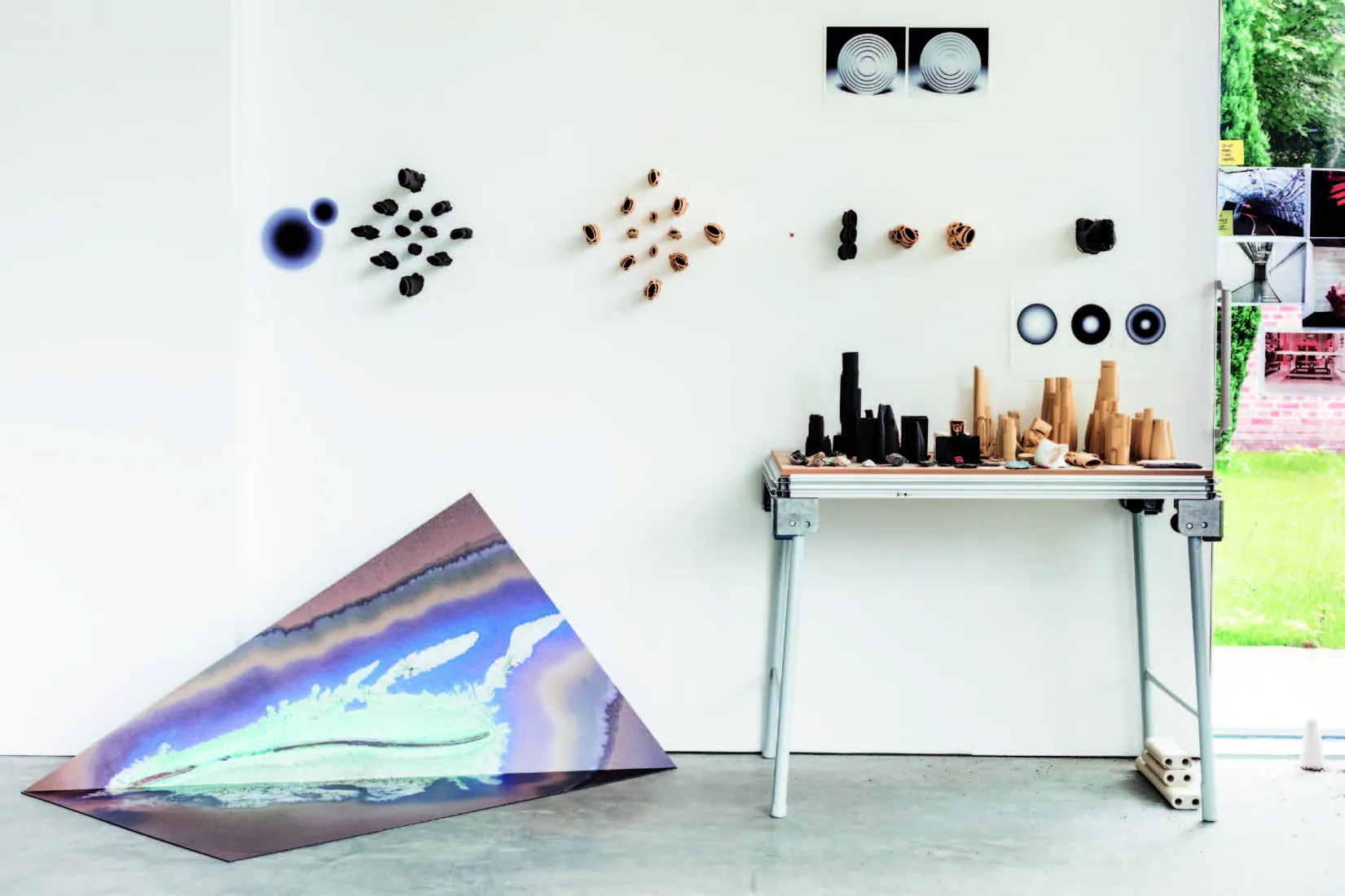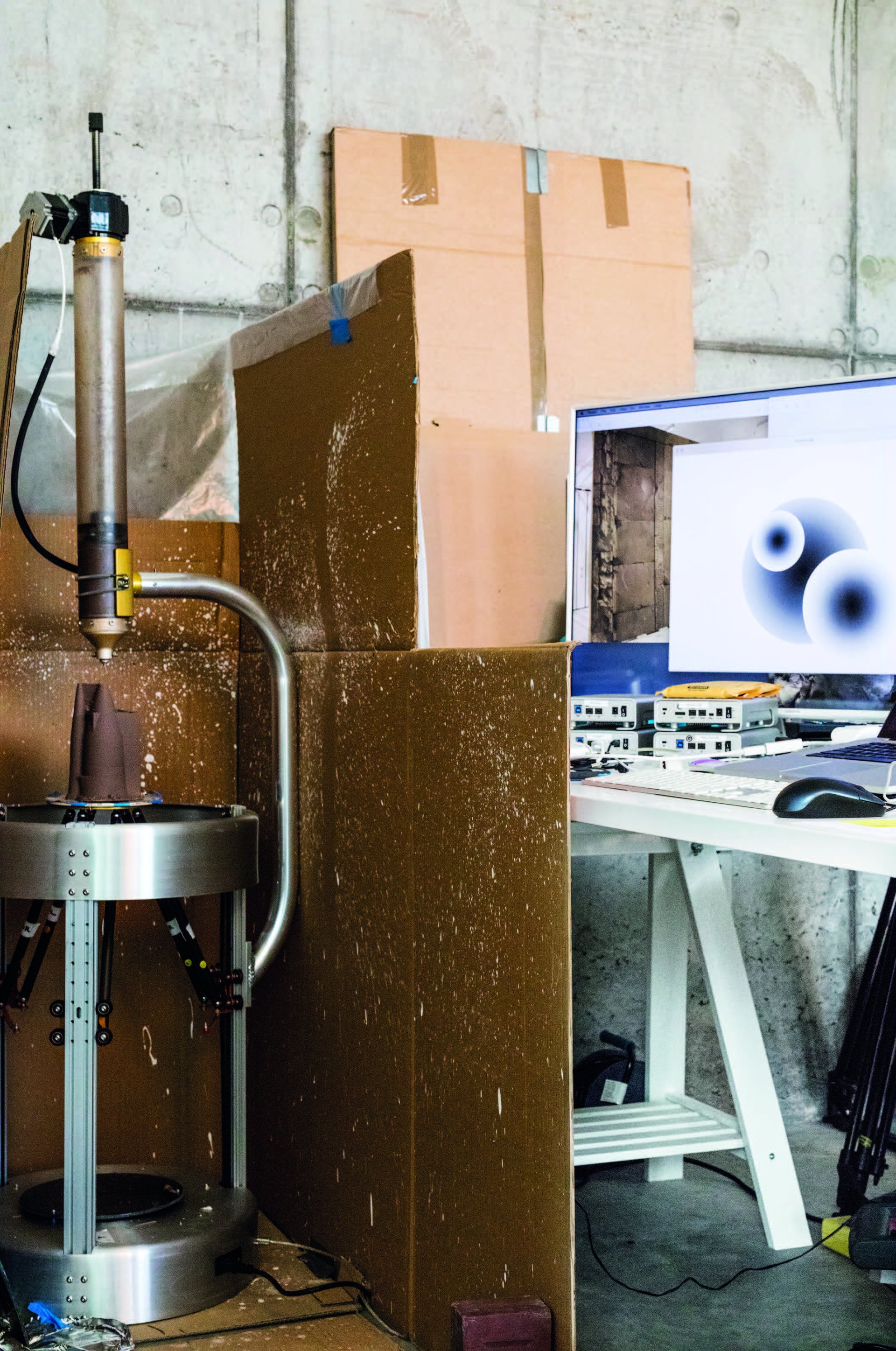
Melissa Dubbin & Aaron S. Davidson
In 2016, Pinault Collection’s artists residency welcomed its first occupants, Melissa Dubbin and Aaron S. Davidson. They look back on their immersion in the area.
Melissa et Aaron avaient déjà des liens avec la France. D’ailleurs, c’est à Paris, en 2014, que Caroline Bourgeois leur apprend qu’ils ont été sélectionnés pour le nouveau projet de Pinault Collection, une résidence dans le nord de la France : « Nous avons ajusté notre vie et nos projets à cette année de résidence à venir… tout en nous demandant si cela était bien réel ». Pendant un an et demi, Melissa et Aaron préparent leur expatriation, depuis leur studio à Brooklyn, New York, à cinq mille kilomètres du bassin minier. Ils sondent l’actualité de la région et survolent la ville sur Google Earth. Ils ne sont pas étrangers à l’histoire de ce territoire. Ils sont tous deux issus de familles de mineurs. Le grand-père d’Aaron a même été pilote volontaire dans la Royal Air Force pendant la Seconde Guerre mondiale. Dans son journal, il raconte ses vols au-dessus du plat pays : « Des récits de mines et de guerre sont présents dans nos histoires. Elles transcendent notre simple appartenance à un territoire particulier ». L’enjeu de la résidence, pour eux, est de taille : « Une résidence comme celle-ci permet d’accompagner la croissance significative de notre travail ».
Pour Melissa et Aaron, Lens est à la fois un refuge et une source d’inspiration : « Chaque jour, deux terrils en face de nous, le Louvre au bout de la rue, l’influence de ce territoire ne peut être ignorée… il pénètre notre quotidien et se rappelle à nous, même quand nous jardinons ». Ils rapprochent ces terres détruites et l’histoire tourmentée de la mine à des références plus personnelles. De La Jetée de Chris Marker aux ouvrages d’Ursula K. Le Guin : « C’est une zone auto-dévastée qui a connu des catastrophes successives. Nous essayons de trouver des connections entre ce paysage et des éléments appartenant à notre univers, qui pourraient paraître étrangers mais qui ne le sont pas ». Alors qu’ils étudient les relevés géologiques de la ville, ils se figurent une forêt préhistorique engloutie sous leurs pieds – « cette image a été très active depuis notre arrivée et nourrit notre imaginaire. Je l’imagine, là, très présente, presque verticale » confie Melissa. La proximité du Louvre-Lens les invite à se poser la question de la vie souterraine et d’un éventuel tournant culturel : « Il y a eu cette inversion : l’industrie minière qui consistait à sortir le charbon des profondeurs a été remplacée par le tourisme culturel qui implique maintenant d’enterrer les œuvres d’art pour les protéger. Ces dernières retournent à l’endroit où est partiellement né le problème ».
« Ici, nous avons trouvé une méthodologie qui sera facile à transposer à New York. Nous avons créé un cadre de travail qui pourra continuer à fonctionner en dehors de cet espace ».

Au quotidien, Melissa et Aaron s’engagent à la fois dans la production d’œuvres « qui se donnent à voir rapidement » et des projets au long court faisant intervenir d’autres corps de métier. À Lens, ils poursuivent notamment un travail débuté aux États-Unis, d'interaction entre des céramiques et du son. Certaines d’entre elles étaient exposées dans les galeries Untilthen et Campoli Presti, à Paris, en avril 2016, en parallèle de leur vidéo Nobody Shoots a Broken Horn.
« [Depuis notre arrivée à Lens,] nous avons également travaillé à modifier l’ancrage d’images sur toile en utilisant du sel, du nitrate d’argent et le cuivre de câbles recyclés ». Ces tableaux sont à la jonction de la proto-photographie et des moyens modernes de transmission de l’image et du son. Les câbles agissent comme partie intégrante de la formation de l’image mais aussi comme des filtres conduisant le son. Des liseuses cassées, dont la dernière page lue par son ancien propriétaire reste capturée à l’écran, peuplent également leur atelier. Une autre manière d’explorer les idées de filtre et de fixation de l’image.
Les artistes ont également entrepris une série de sculptures avec des souffleurs de verre de laboratoire. Contrairement à ces derniers qui font disparaître les imperfections lors du processus de chauffe, Melissa et Aaron veulent rendre la vie aux défauts de ces objets, ces distorsions habituellement effacées.
Enfin, l’étude de soufflets les conduit vers l’investigation d’une nouvelle série en cours. Ils les observent d’abord sur les zooms des appareils photo puis dans certains instruments de musique, avant de s’intéresser à des structures plus complexes composant notamment les housses de protection ou habits pour robots : « Ainsi, nous nous sommes mis à créer ces housses de protection. Nos expérimentations vont de la création d’habits pour des robots de tous types, existants ou de notre invention. Nous aimerions aussi que cette enveloppe puisse acquérir sa propre autonomie ».
